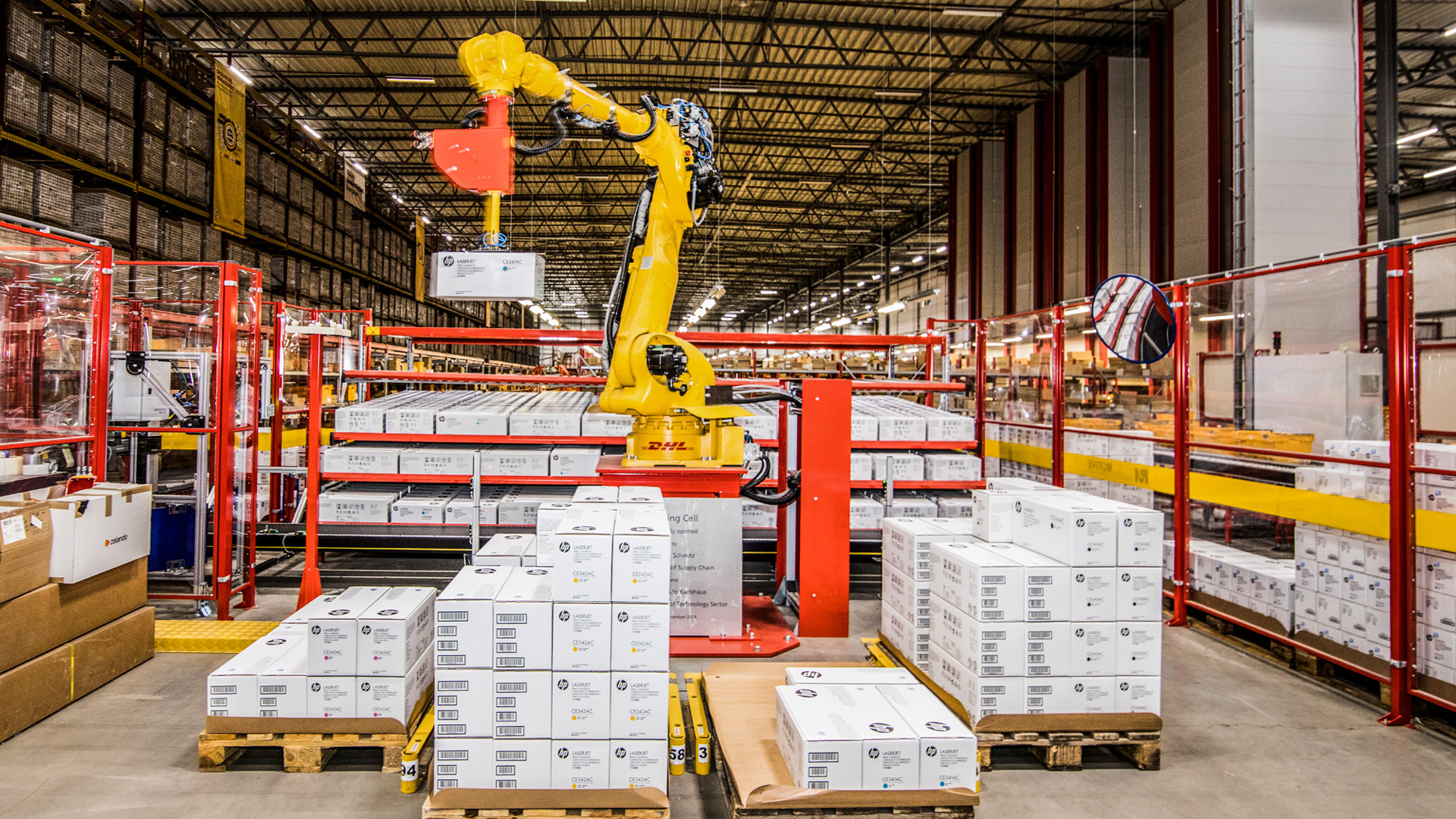
There is much discussion about the future of logistics. The world has never changed as quickly as it does today, and the challenges in logistics are constantly getting greater. The global Corona pandemic has intensified and strikingly demonstrated the industry’s immanent deficits. With Logistics 4.0, an entire sector has the chance to fundamentally change – with the help of networking, artificial intelligence, and automation.
Logistics 4.0: Definition
Anyone debating the challenges and solutions in logistics simply cannot miss the term Logistics 4.0: a moniker that promises innovation, connectivity, and the future. But what exactly is implied by this phenomenon?
The Supply Chain in Industry 4.0
The fourth industrial revolution, also known as Industry 4.0, is the namesake for the parallel development in logistics. Everything is about digitization. Processes that used to be analog are being simplified, automated and, above all, made more digital. New facilities enable faster and more efficient production that only starts when there is actually a demand – and which can generate more variants in a shorter period of time. Companies can respond to trends more quickly, relocate production capacities, or even develop individual products without suffering significant losses in efficiency compared to mass production.

Industry 4.0 revolution
In terms of logistics, this means that, compared to previous phases, automation is the crucial new feature in Logistics 4.0. And automation essentially involves the ability to interconnect devices and have them communicate with each other. The equipment evaluates data and then processes the information to determine the next steps – entirely automatically and in near real time and without the need for a human to control them. The advantages lie at hand: this will help to counteract the global shortage of skilled labor in logistics. Automation and artificial intelligence can take over certain tasks and reduce the acute need for qualified personnel. For example, autonomous driving to address the lack of truck drivers, robots as assistants in order picking, and software to save time in logistics management. The possibilities are manifold. In addition, there are lower costs, decreased error rates, faster processes and, all in all, a more secure supply chain.
Industry through the Ages
Industry as we know it today first began with the introduction of mass production by machines around 1800. We are now in the fourth industrial phase. The phases did not follow a future-oriented plan but are always defined in retrospect. For only when it is understood which specific development led to which change will it become apparent what fundamental impact the respective phase had on the industry.
The phases to date at a glance:
Industry 1.0
Industry 1.0 evolved more than 200 years ago. This phase was characterized by machines such as looms that were driven by human power. During this first industrial phase, water and steam power successively replaced human propulsion.
Industry 2.0
Towards the end of the 19th century, electricity was introduced as the main propulsive force. With the help of electricity, production in factories was automated for the first time and became more efficient due to assembly line work. This period also saw the beginning of the globalization phase: from then on, goods were produced and transported across continents, aviation was introduced, and ships crossed the oceans.
Industry 3.0
In the early 1970s, the third industrial revolution took its course. For the first time, computers played a significant role in industry – the beginning of digitization – on the one hand in the shape of large calculating machines, and on the other as personal computers. Office work with PCs, as we know it today, has its origins in this period. Especially in industrial management, this was a decisive step.
Industry 4.0
Right now, we are in the middle of the fourth phase of the industrial revolution which is characterized by synergy effects. Machines and computers are networked with each other and exchange data automatically. For the first time in history, computers are making independent decisions based on human programming. A new working world is currently evolving in which environmental protection and occupational safety will play an ever-greater role.
Logistics 4.0 – a prerequisite for Industry 4.0
Never before has the world been as closely interconnected as it is today,
Never before has the world been as closely interconnected as it is today, digitally as well as analogously. Resources are transferred from continent to continent to keep the production of goods running all over the world. These globally produced products subsequently find their potential buyers anywhere on the globe and are thus sold worldwide. The precondition for Industry 4.0 is an intelligent and networked logistics system.
Special features of Logistics 4.0 are:
- networking
- automation
- real time communication
In a fast-moving age like today, the reliability of logistics and the resilience of supply chains are more important than ever. Modern society is accustomed to the permanent availability of resources and products. Supply chain disruptions once again demonstrate how sensitive the interdependencies of the value chain are. If the delivery of goods fails, consumers may buy from a competitor instead. The relevance of consumption continues to grow, only diminishing briefly during the pandemic, and logistics behind it must always keep pace with rising demand.
Objectives and Challenges of Logistics 4.0
Transparency – that is the crucial quality that Logistics 4.0 is supposed to create. On the consumer side, it is about being able to track where orders are at any time. For companies, however, it is much more relevant to have transparency about each individual link in the supply chain. The more information about the supply chain is available, the simpler it is for companies to prepare for potential threats and increase the reliability of deliveries.
The basis for more transparency is accessible, on-time data, the collection and exchange of which is a central component of Logistics 4.0. The more data is exchanged along the supply chain, the better the coordination of processes. If the exchange of data also leads to automatically triggered processing, the efficiency of transports is improved, and additional risks are reduced. The positive effects on decisive parameters in logistics are: more reliability, quality, and flexibility of deliveries.

The Human Factor in Logistics 4.0
When discussing Logistics 4.0, there is a lot of talk about automation. Devices communicate with each other, vehicles move autonomously from one place to another, and goods are no longer picked from the shelves by hand. This sounds futuristic to many, but it is already reality here and there. What is the human role in all of this?
The fact is: digitization will increase the efficiency of processes in logistics, counter the lack of skilled workers, and save time. However, digitization will only provide logistics with support rather than replacing entire activities. Above all, the fluctuating workload makes it difficult to meet the increasing demand with machinery alone. It would be plainly inefficient to integrate so many robots and automations that even peak loads are covered.
People will always play a central part as a resource in logistics. In the future, simple auxiliary work may be completely performed by robots, but qualified personnel will always remain the most important asset. Logistics 4.0 will also introduce entirely new scopes of duties that we have not yet identified.
The most reliable logistics in the future will not be provided by the company that has automated the most processes and deploys as many robots as possible, but rather by those companies that best understand how to combine the skills of people with the abilities of machines for the benefit of their customers.



